Design Your Own Navy
By MICHAEL BRISCOE
Virtual shipbuilding technology from professional naval engineeers
High school students grew up online and in video games. FLEET is a free ship-design simulator (See “On the web”) that reaches students in their native environment—video games. It is also a physics simulator that applies content first learned through hands-on scientific investigations. Using FLEET, students design and use ships for various naval missions by mastering scientific concepts such as force, energy, and work, while employing an engineering design process.
To begin the unit, students discuss an engineering design process and decide how they will use it to organize their work in this unit. Then, students engage in design processes using easily available materials and exploring boat designs in water. these initial experiences serve three purposes: providing a variety of experiences with the central phenomenon, exposing and reinforcing the vocabulary expected in the classroom, and setting the stage for understanding what the physics in the video game is showing.
In the second half of the unit, students transfer these concepts to the FLEET simulator and use it to solve engineering design challenges.
What is FLEET?
FLEET uses simulated naval missions to engage students in naval engineering. The program is administered by the American Society of Naval Engineers and is funded by the Office of Naval Research. The game, curriculum, and all associated resources are free. Educators across the country are adapting parts of the FLEET curriculum to support instruction in forces and motion, while introducing the engineering design process to their classrooms. FLEET has been used by hundreds of students in dozens of schools across the country. High schools implementing FLEET as part of their kinematics curriculum can use the free 10-lesson curriculum, which usually takes classes about three weeks to complete. This unit gives students conceptual understanding and computational experience with force, average velocity, acceleration, power, work, and momentum.
The FLEET video game has two basic components: the design interface and the mission simulator. Students first design their ship in the Drydock interface. Using a modular design, students select different engines, propellers, rudders, helicopters, cargos, etc. There are over 800,000 possible combinations, and that does not take into account the infinite possibilities for water stored in ballast tanks.
Students then test their ships in the simulator. Before students attempt longer missions, like Search & Rescue or Supply & Logistics, they test relevant variables of their ship in short simulations designed for data collection. For example, in the Search & Rescue mission, a ship is sinking over a kilometer off the coast and the students’ ship must race to the sailors in the water, navigate around the debris, and rescue all five sailors. The data collection tests include a Speed Test to make sure the ship is quick, a Maneuverability Test to make sure the ship will not collide with sailors needing rescue, and a Rescue Practice so students can practice using the rescue boats and helicopters used to facilitate these types of missions.
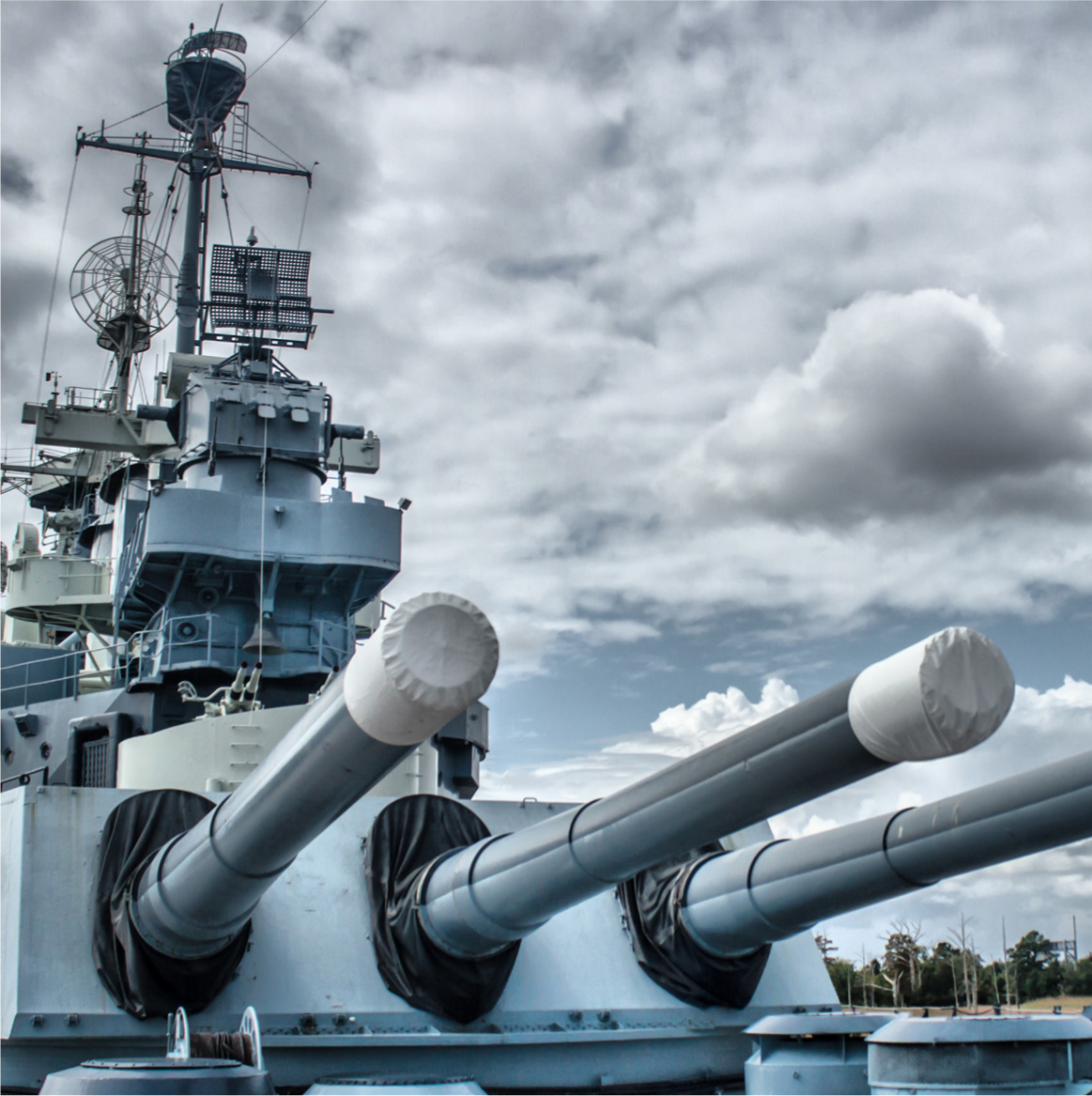
Getting started
We found that the best way to implement FLEET is to explicitly discuss engineering design processes and agree on using one framework throughout the class’s work. Next Generation Science Standards Appendix I (NRC 2013) added specificity to the engineering expectations (Figure 1). Some schools, districts, and states use a specific engineering design processes (e.g., Massachusetts’ model is shown in Figure 2). Our curriculum also links to a generic model described by NASA in six short videos that classes use to create their unique processes.
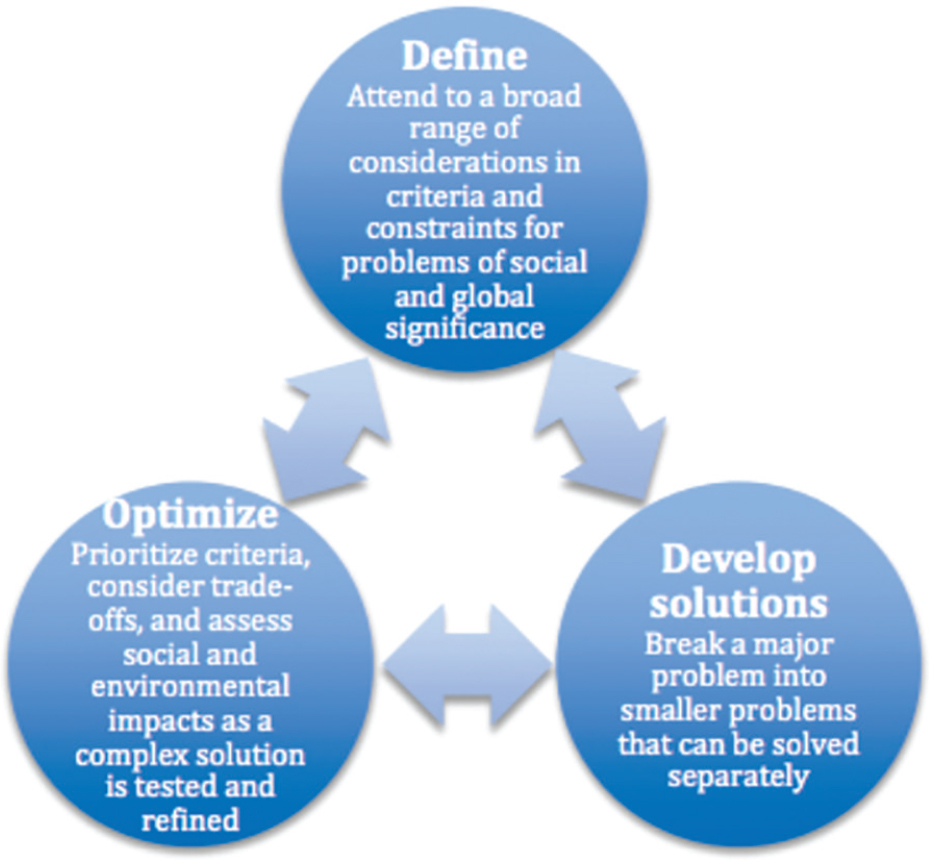
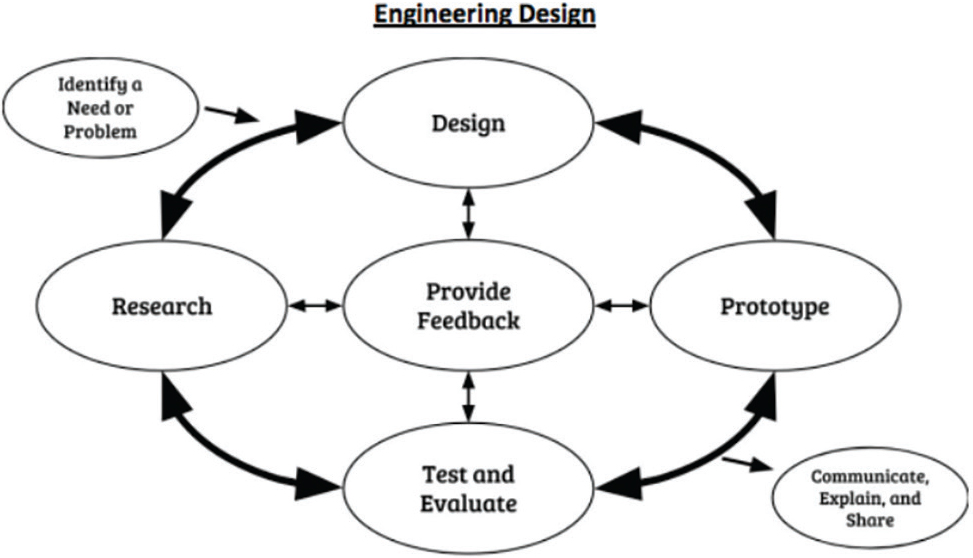
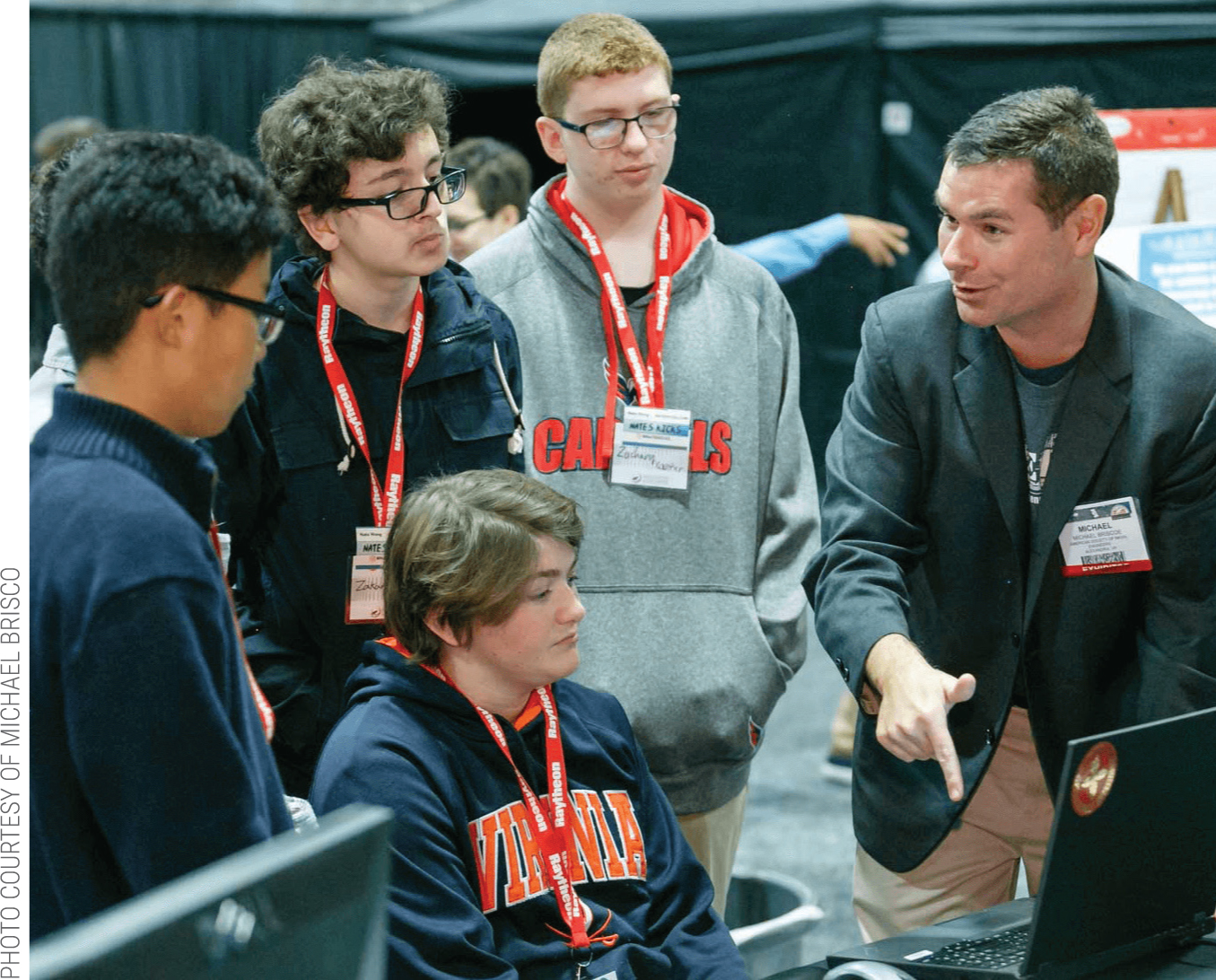
The first FLEET lesson starts with students learning about an engineering process and then coming to a class consensus about the engineering process students will use throughout the unit. Like many lessons in our curricula, the lesson ends with students creating an artistic artifact that documents their agreed-upon process. These artifacts can be placed on classroom walls to remind students of their engineering process. At this point, students should understand the expectations for how they will engineer solutions together.
The next step is engineering solutions to several challenges. Classes have used challenges from local and familiar issues to naval-focused problems, like how to work on the bottom of an aircraft carrier. Each of these lessons begins with students discussing the problem as a whole class, then breaking into small groups. Students engineer solutions in teams by imagining possible ideas, researching aspects of their proposed solutions, and preparing materials to share their proposed ideas to the class. Afterwards, student groups present solutions to the instructor and class and answer questions that probe their problem-solving process as well as their final solution. The online curriculum gives teachers pointers on how to celebrate a group’s solution as well as identifying and awarding the best solution to the given challenge. Sometimes these class discussions lead to a solution that combines the best aspects of multiple solutions.
Getting wet
The first half of the FLEET unit uses primarily hands-on science experiments and class discussions to ensure students are using the vocabulary and content teachers expect when discussing forces and motion. These hands-on lessons have the same structure as the video game–based lessons; students work in teams, use an engineering design process, collect data, and share their results. This continuity in structure allows students to internalize the expectations while working with this content.
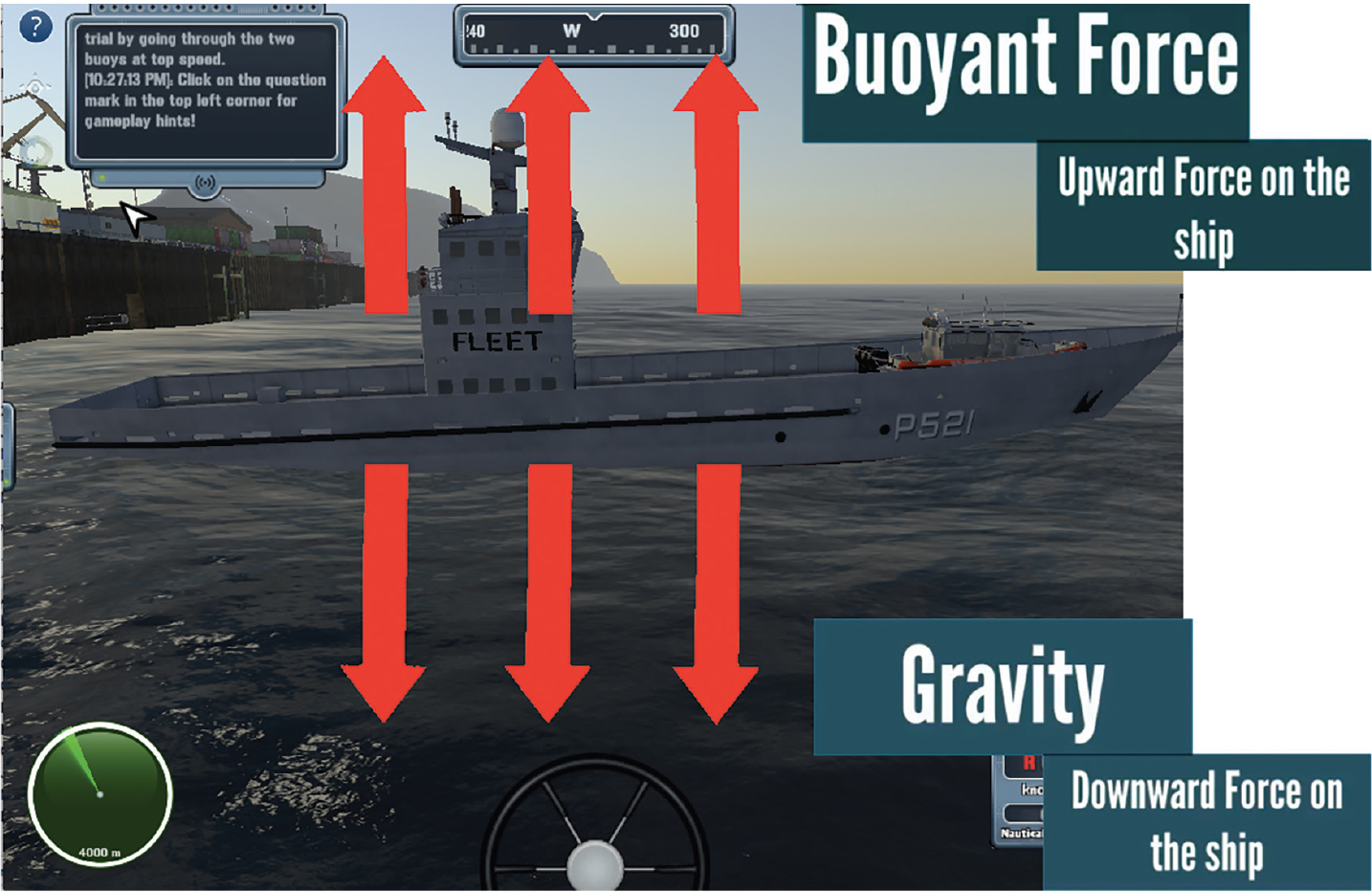
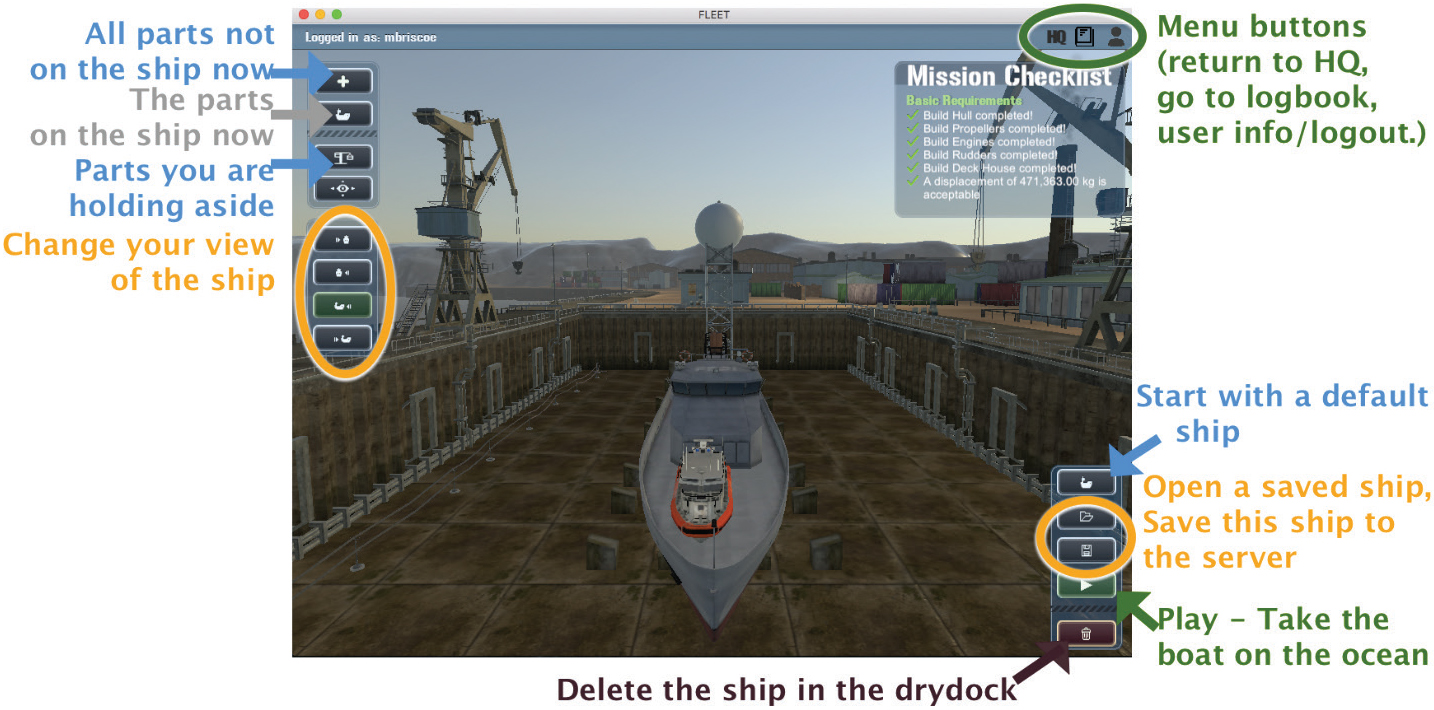
During these initial lessons, students work in groups of three to four using recyclables, scissors, and duct tape to create boats for specific purposes. For example, one challenge asks students to build a boat that can hold two partially filled water bottles. Each group presents its solutions and data to a group of engineers—the class. We always talk about students as engineers to ensure that students understand they are doing authentic engineering and have the ability to become professional engineers if they so choose. In these design challenges, we always celebrate when students think like an engineer—when they use data to compare designs, when they collaborate and combine design ideas, and when their design fails and they learn from it.
The group presentations allow students to learn and demonstrate skills in obtaining, evaluating, and communicating information. Each lesson plan has guiding questions to use during student presentations that focus class discussions on an aspect of the engineering design process. These discussions set the expectation that students are the primary investigators and data collectors.
The wrap-up activities for these early lessons generally include a short snippet of FLEET gameplay connecting their hands-on investigation with the physics simulator. For example, after students design a stable boat, they watch a ship undergo the Stability Test, which simulates a wave hitting the broadside of the hull to ensure it is safe in heavy-seas conditions. The simulator shows the same forces they just investigated, but scale up so they are interacting with a 500,000 kilogram (1,100,000 lbs.) ship. We find that students are engaged and more easily make connections when the hands-on learning and simulator-based learning are explicitly connected through the familiar medium of video games.
Getting virtual
Students use a variety of physics simulators in this unit so they have a range of experiences. We wanted to ensure that students do not have a misconception that there are only one or two ways to simulate real-world physics. Two PhET simulators that are particularly useful for this unit are The Ramp and Buoyancy.
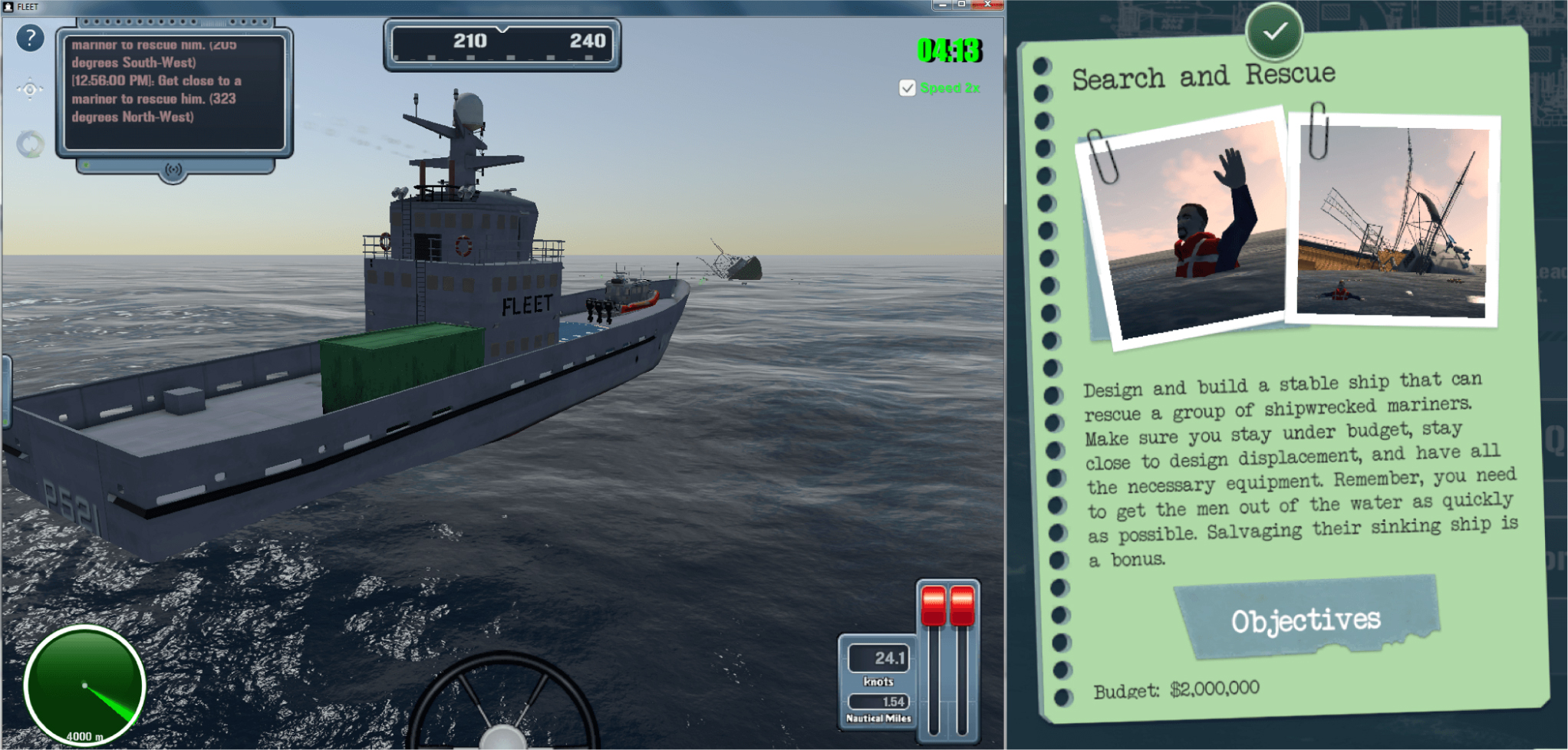
One common misconception that students struggle with is thinking that forces in different settings behave differently, so the unit contains questions that connect students’ experiences using PhET, using FLEET, and hands-on scientific explorations. The Ramp is a PhET simulator that uses traditional kinematic investigations on sliding objects to investigate gravity, force, energy, and work from a variety of perspectives.
The force-body diagram is the foundation of basic force interactions, and we use it to compare balanced and unbalanced forces as an object moves horizontally. When objects are in motion, something powers the object forward (gravity on the ramp, diesel engines in FLEET), and forces counteract that movement forward (friction on the ramp, drag from the water, and possibly forces from waves, depending on the wind direction). The forces are unbalanced. From a vertical perspective, gravity provides a downward force while other forces provide an opposite but equal force upward to support the object (normal force on the ramp, buoyancy force in FLEET) so that vertical forces are balanced. The worksheet provided in the FLEET curriculum directly asks about these similarities, which inform future design discussions.
The Buoyancy PhET simulator also has a worksheet of guiding questions to help students explore concepts related to density and weight distribution. Students also create objects that fall long enough so the object’s velocity allows it to touch the bottom of the buoyancy tank and then float after the object reaches equilibrium. This allows students to understand that objects that accelerate for a longer period of time have a greater velocity and can also move farther. Then they can see how buoyancy force can lead to equilibrium.
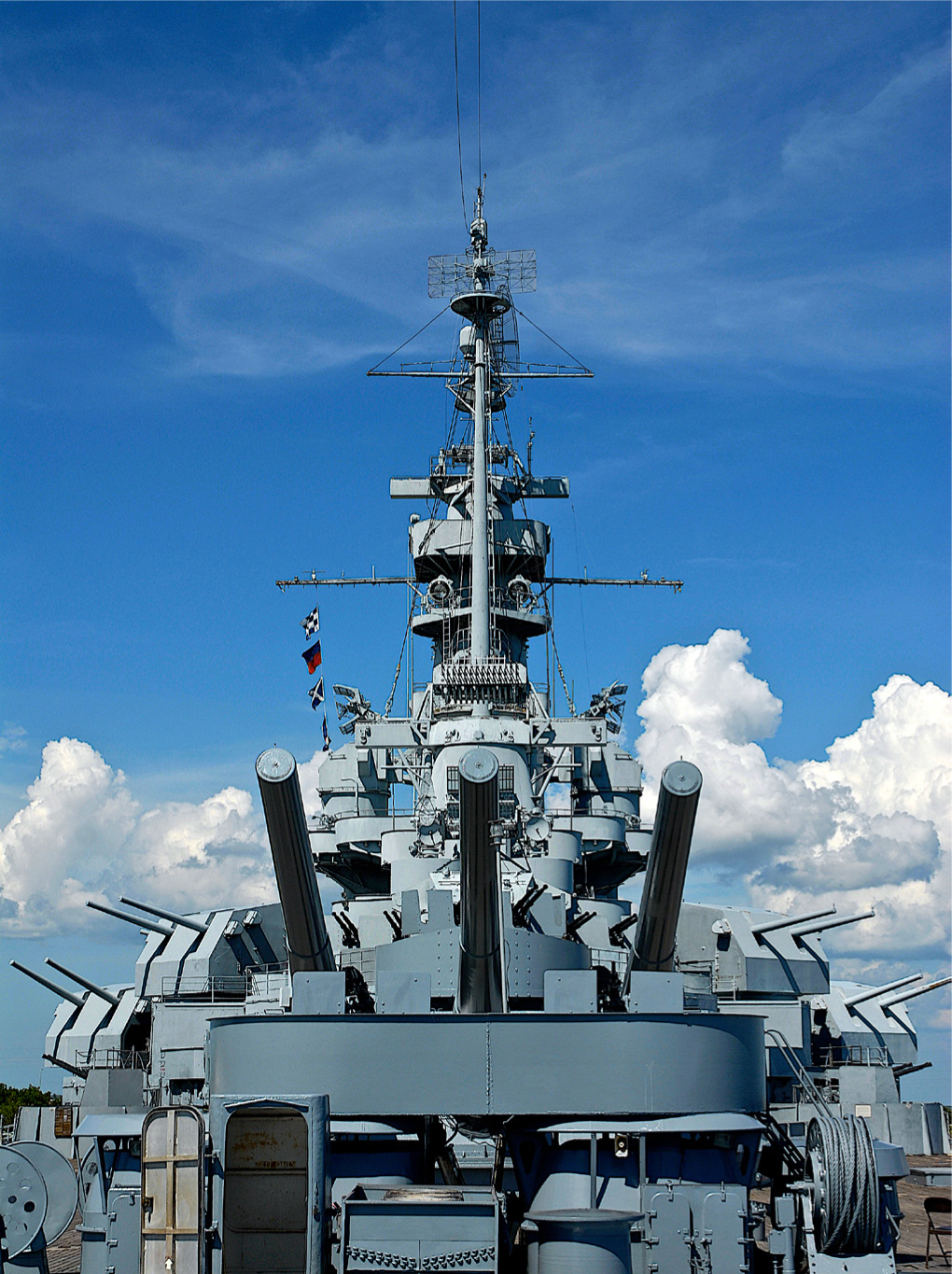
These lessons with other types of simulators help students understand the range of simulations they can use (and perhaps design in the future). By adding other simulators with obvious physics output, we help students start to see the physics represented in simulations. The PhET simulators have real-time data displays that show calculations for quantities like force and energy. In the remaining FLEET lessons, students will be expected to calculate these values by collecting their own data and using the data to estimate their own calculations of force and energy.
Exploring the force in FLEET
About halfway through the unit, most of the instructional time is spent working in FLEET. These lessons all use mission- specific engineering challenges (e.g., design the fastest ship, build a ship optimized for search-and-rescue missions). Students work in teams of three or four, rotating roles. We use roles such as: First mate: steers the ship, follows orders from the captain Project manager: ensures the team is focused on meeting the objective in the time allotted Data scientist: in charge of collecting/analyzing the data Spokesperson: organizes data and design information for quick, professional classroom discussions Captain: coordinates activities of the team to ensure everyone is working toward the mission, resolves conflicts when needed
Students continue to organize their solution while working in FLEET, engaging with the engineering design process by
- working together to analyze the mission parameters and the basics of designing a safe, effective ship;
- creating an initial ship design that uses their understanding of forces and motion to design a possible solution;
- testing the ship using a procedure that will generate data relevant to the mission at hand;
- collecting data from the tests;
- using the data and scientific content knowledge to return to the Drydock interface and improve the ship design; and
- documenting this iterative improvement process so that the decisions, data, and final solutions can be shared with peers.
For example, a group may begin with the default ship. They can immediately test it in the water using the Speed Test. Students should begin collecting this data because it will be a good baseline measurement as they improve their design. Students can return to the Drydock interface, and think about what will increase the ship’s speed. Some teams may realize that if their engine creates more force, then the ship will accelerate more rapidly. Groups using this scientific reasoning may choose the turbocharged diesel engine, which has 1,500W more power. Other groups may think about ways to reduce the mass of the ship, so that the initial force results in greater acceleration. This type of reasoning shows that students are engaging in the engineering design process as they are
- refining their understanding about the mission parameters,
- changing their design in a way that they predict will improve their speed,
- testing the new ship iteration using the same test and the same driving style, and
- remaining unsatisfied with the current design and finding more ways to improve the ship design.
The FLEET unit concludes with a competition for the highest score in the Search & Rescue mission. Teachers can also give formative feedback in the form of “awards” to students and groups that exemplify parts of the engineering process. For example, a group could win an award for “Clearest Data Display” and a student could win another award for “Best Independent Research.” Teachers may use more formal assessment methods as well. We suggest this positive assessment experience so that students are empowered to see themselves as engineers.
Next steps
This article describes the use of FLEET in traditional physics classrooms in the early high school years, although we know FLEET is being used in elementary and middle schools and in more advanced academic settings. The gameplay is intuitive, and teachers have found students need little support to get started with this physics simulator. We have a variety of educator-facing resources, including lesson plans, worksheets, informational texts, literacy questions, and user guides (see “On the web”). We hope you join us and create a fleet of physics exploration in your classroom.


